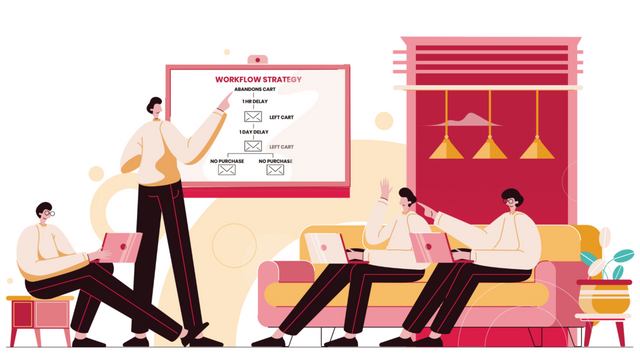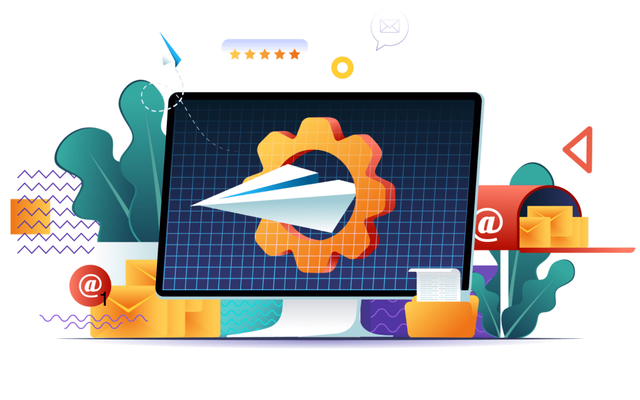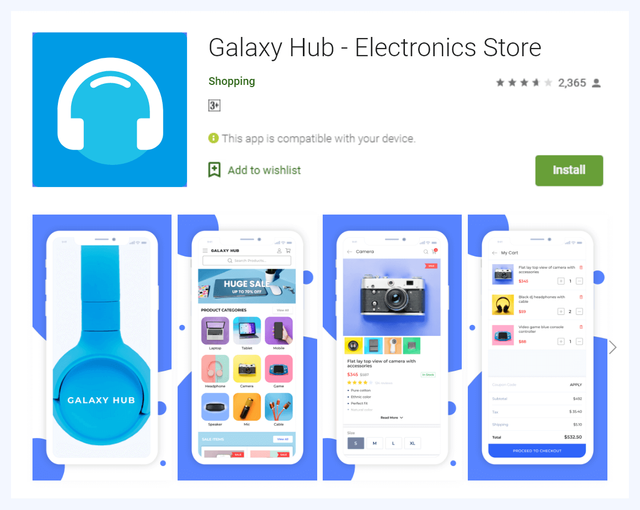Four in-app strategies to power an app marketing campaign and expand user base
Apps need users just as a fair needs footfall. There is no point in bringing an app to market if there is no concrete strategy to market the app to prospective users. There is a whole batch of mobile app marketing techniques companies put in place to acquire new users.
From app store optimization to social media, marketers try their best to get downloads from every channel possible.
They even try to exploit the correlation between SEO backlinks and app store rankings by deploying high quality link building mechanisms.
The difference in digital and app marketing
The main problem with app marketing is its multi-layered process. Let’s take a look at two marketing campaigns to understand the difference between normal digital marketing and app marketing.
In the first campaign, you are promoting your WooCommerce store on Facebook with an outbound campaign. You’re directing people to the product page and trying to convert them with each click.
To purchase the product, a customer only has to click on a link and visit the product page.
In the second campaign, you take a WooCommerce app builder for Android and iOS and convert your online store into an app. Again, you go to Facebook to promote your shopping app. However, your customers this time have to first download your app, go through user onboarding, and then discover the product.
See the problem here? In the second case, you’re asking users to go through a whole process before they get what they want.
This is the main challenge of mobile app marketing. For all purposes, it is also an insurmountable challenge. Users will always have to download the app to enjoy its benefits. It will always be a multi-layered process.
The only solution is to find better ways to peak the interest of the target audience. One way of doing this is using in-app analytics and strategies to drive user acquisition and app marketing.
How to use in-app tactics to drive app downloads?
There are a number of in-app strategies and tactics that can help drive app marketing and increase an app’s user base.
The following sections cover four crucial in-app strategies that help drive app downloads.
#1 - Testing messaging strategy with push notifications
Sending push notifications is a common part of running a mobile app. It is a good way to reach app users directly and target them with specially tailored messages.
Generally, push notifications help improve app retention. In fact, the main reason to send out push notifications is to trigger dormant users into coming back to the app.
How can sending push notifications then help in increasing app downloads?
Every notification sent to a user is a test. A notification which gets a better response from users is naturally one that connects better with the target audience.
The CTAs that do well in a push notification campaign will thus naturally do well in a marketing campaign. Your app users were once prospective users who you managed to convert. If they respond well to a CTA, there is a good chance other prospective users will also respond positive to the same.
Push notification data enables marketers to analyze which marketing messages work better with the target audience. It is the best way to see the value of a CTA message.
#2 - Study heatmaps to improve app store listing
If you use mobile app analytics tools to measure your app performance, you have come across heatmaps.
Heatmaps show the areas of an app which users frequent the most. There are many screens in a typical mobile app that users frequent. A heatmap basically shows which screens are most frequented and which part of a screen has the most user activity.
Generally, heatmaps are used to analyze which part of an app generates the most engagement. This basically helps companies see the most active regions of their app. A thorough analysis of a heatmap leads to companies to make the active regions on their app more accessible. This causes an increase in overall engagement and user retention.
Thus, heatmaps clearly contribute to improving some of the crucial app metrics which measure app performance. How can they improve an app store listing?
A heatmap shows the areas of an app which are frequented the most. In essence, these areas have been given a vote of confidence by your app users. This means the design and features of this area are naturally more attractive and relevant to an average user.
Companies can thus use screenshots of these areas to display on the app store listing. This is because these areas have shown the most promise from a sample size of real users. The features used most often should become the headline of your app description and marketing content as well. This is because these features are deemed most relevant by existing users.
#3 - Drive reviews and ratings through in-app mechanisms
App reviews and ratings have a direct impact on app store ranks. It is relatively simple to understand this phenomenon. App stores are in the business of exposing their users to apps which provide a wholesome experience. Why would they show apps which have poor reviews and ratings?
Thus, if you manage to get more positive reviews and rating, your app can get more downloads.
Many apps create review generation mechanisms within their platform itself. You must have come across prompts and pop-ups within apps where you’re requested to provide reviews and ratings on the app store. These mechanisms are geared towards generating a greater volume of app reviews from existing users.
You can essentially create these same mechanisms and make your app users write positive reviews and provide generous ratings.
Here are a few points you need to remember -
● Timing - Have you noticed how payment apps immediately ask you to drop a review when you complete a payment? This is not a coincidence. They recognize the fact that your fingers are likely to be near the screen after completing a payment. This clearly underlines the need to get the timing right. Look at the behaviour your app users and act accordingly
● The Review CTA - The CTA text is crucial for pushing willing review providers over the line. Use as little text as you can and double down the good experience you’re providing your users.
● Location - You’ll get no ratings or reviews if you add a prompt during an intense user activity. The best time to ask for a review is after a user is finished with the main activity
#4 - Analyse user behaviour to select target audience for campaign
As you get new app users, you will also be able to see the cohorts who leave your app and those who stay for a long time. The latter is naturally a better segment to target in a marketing campaign.
You can naturally make a connection here and target audiences for a marketing campaign based on the attributes of your existing users.
An even better way of doing this is calculating the LTV value of different app user segments. The segment which is most valuable should naturally be the first batch of people you target in a campaign.
In conclusion
Many parties see the advantage of bringing an app to market. Some start by coding an app from scratch. Others hire an app development agency to create an app. There is even an option now to use mobile app builder and convert WordPress to Android app.
None of these parties can survive without finding ways to increase downloads. It is the only way app growth can take place.
This piece provides an overview of four in-app tactics you can deploy to help power a mobile app marketing campaign. These tactics are not the only ones marketers should use, but they nonetheless hold great promise.




